
Understanding Lead Capture is the first step toward reaching your lead conversion goals.
Invest your valuable resources in converting high-quality leads.
Not everyone who visits your website is interested in your product or service. It's even less likely they're going to take the next big step and buy from you the first time they land on your site. Often, once a visitor finds what they are looking for, they will leave your site without giving your business anything. However, you can still capitalize on your web traffic through lead capture.
A lead is a person or business who demonstrates an interest in your company’s products or services through:
Collecting the information from your prospective buyers is the basis for building a long-lasting relationship with them. It is also a great way to improve your understanding of the people interested in your company brand. Companies should collect this information in the form of:
While these terms appear similar, they’re not interchangeable.
Lead capture is the process a business undertakes to enable a website visitor to provide their personal information, such as their name or email address, and the visitor receives something in return. It is the last step of the lead generation process.
Once a business receives this information, the visitor is considered a lead.
With this, a company can send the lead relevant and timely information about their brand, products, services, or industry. The business will be able to send this information across various communication channels. If your company collects enough information and reviews the data, it can reveal the type of individuals who visit your site and their pain points, improving your ability to talk with your prospects.
On average, 50% of people who go to your website won’t revisit it. Capturing information from them allows your business to start creating a relationship with the people who have already demonstrated an interest in your company, but may not return to your site otherwise.
The key to convincing your visitors to hand over their information is to provide them with something they will consider valuable. This could be an:
As a business, you always want to give your audience useful and exciting information. Interestingly, the higher the perceived value of what you are offering your website visitors, the more information they will likely give you in exchange.
Lead generation is the process of attracting your customers; it focuses on the efforts you take to bring traffic to your website, social media accounts and converting your site visitors into leads.
Within lead generation, we find all the efforts a business takes to generate leads. These include online marketing streams like:
And offline marketing streams like:
For greater success in your lead generation efforts, it’s crucial to have a steady plan to follow. Learn more about lead generation here.
A lead capture page is a landing page where a website visitor is offered a helpful piece of content in exchange for their information.
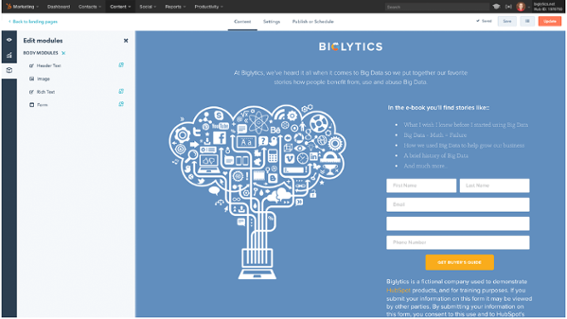
A lead capture form encompasses the fields of data on the lead capture page the visitor needs to fill out to receive the content. Its purpose is to give prospects the option to ease themselves into a relationship with your business brand.
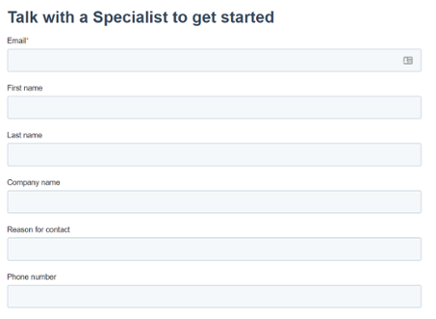
Here is an example:
Let’s say you want to learn about the current website design trends in 2020. After doing a Google search on the topic, you click the link. Once you’re on a blog post and start scrolling down the page, you receive a popup asking you if you want to learn more with a place for you to enter your email address. 99 Designs provides a great example of a popup content offer the average site visitors sees after scrolling through a blog post. It is an effective strategy because the site visitor needs to look at the offer to close the popup window.
Everything you need to start creating your pillar page flows today.
A 2019 Hubspot survey determined that 49.7% of marketers say that lead capture forms are the tool with the highest lead generation conversion rates. This beats out all other methods businesses use to generate leads on their website.
While the use of lead capture forms is the clear winner, let’s take a look at other ways you can capture lead information.
Popups are a handy tool to interrupt the prospect that is visiting a particular page on your website. When their implementation is crafted to disrupt the visitor at just the right time, they can be very successful in getting the prospect to take the desired action. However, if they are implemented in overabundance or too intrusive, the prospect is very likely to leave your site and never return. We have all been to those sites.
The five main types of popups commonly used on web pages as lead generation tools are:
Traditionally used for eCommerce, click popups activate after a website visitor clicks on a campaign text or image. Only recently are they being used as a lead generation tool that once clicked on, an offer appears prompting a prospect to interact with the business.
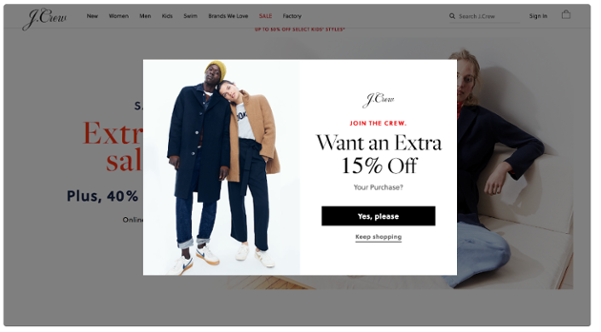
A scroll popup is shown to website visitors only after they have been scrolling through a web page and have shown an interest in your page.
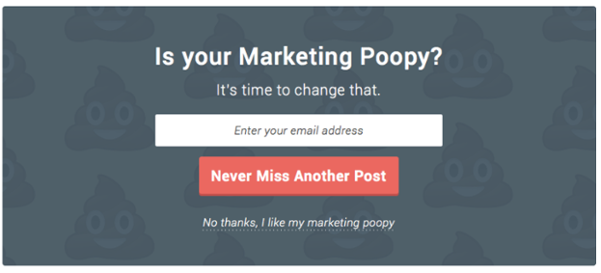
Timed popups are what they sound like: a popup that appears to a website visitor after they have been a website or page for a determined amount of time. They allow you to use time as a determinant factor of a person’s interest in your business and garner email leads who do have an interest.
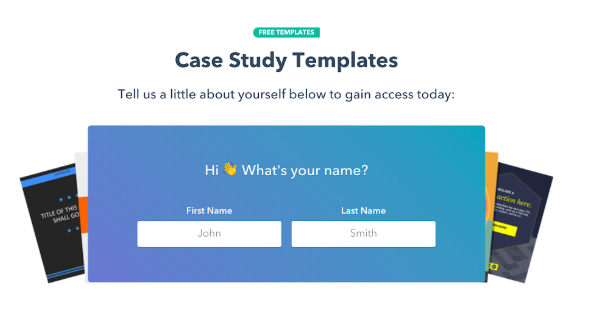
An entry popup appears as soon as a website visitor lands on your page. They are most commonly used to notify a visitor of a sale or to offer gated content.
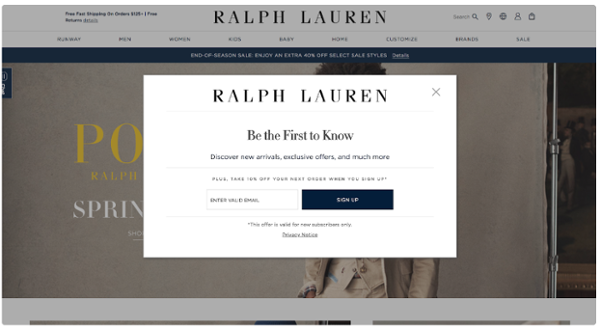
The exit popup is one of the most common and most effective types of popups used in lead generation because when your business website has failed to capture a prospect’s interest, it is your last recourse for lead capturing. If you’ve ever tried to exit a page and received a popup message asking if you’re sure you want to leave, then you know what an exit popup is.
Exit popups use mouse-tracking technology to monitor the direction of a cursor. When it anticipates a site visitor is about to leave, a popup will appear with an offer, prompting a person to consider their offer.
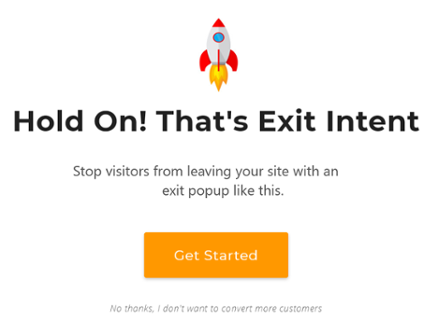
While exit popups are bothersome to many, they can also be a useful tool for companies who want to generate leads from their website visitors. They provide the last opportunity to bring about a new lead before he or she leaves the site. For better results from popups, it's essential to follow certain best practices.
The popups you choose to place throughout your website should grab a visitor’s attention at their highest converting point of contact. In other words, the best place for a popup should be where a visitor is more likely to accept your opt-in offer in exchange for their contact information.
For example, a blog post on your company blog with the highest website traffic can be a great place to offer a subscription to your newsletter in exchange for a relevant eBook or case study.
Chatbots are computer programs intended to simulate a conversation with a human being. They’re also an optimal choice if you want to provide your site visitors with a tool that can answer their questions in a matter of seconds and can’t have around-the-clock customer support.
In 2019, HubSpot reported that 7% of marketers said chatbots were their highest lead conversion tool. Chatbots are so successful because the prospect can interact directly on your site, streamlining the process of looking for a solution to their problem.
Powered by preset algorithms and machine learning, chatbots can significantly reduce the workload of your customer support team. While a chatbot may not be able to answer all of a prospect’s questions, you can program it to pass an inquiry along to a human customer support representative in the event the bot gets stuck.
The chatbot can also collect personal information about the user, such as their email and information on the problem they are trying to solve. If a human has to step in, they will already have some of the information necessary to help the customer. Streamlining the customer support experience is a surefire way to make a lasting impression on prospective customers, as 50% of them are more likely to buy to communicate with them.
To generate leads from this tool, you can opt to ask your site visitors who engage with it to provide their email address, so that if they cannot find a human to help them quickly enough, they can reach out via email and when the chat is over. You can send them a copy of the conversation in their email and send them further information about their query.
Live chats with a human customer support representative are highly effective – not only do they significantly reduce the time a prospect waits for an answer, but it also improves their overall experience on your website.
Given that a live chat interaction provides immediate answers from a human being who can resolve issues on the spot, a website visitor will likely prefer this over the use of a chatbot. 13% of businesses reported that their use of a live chat tool on their company website garnered more leads when compared to the use of chatbots.
Interacting with potential customers in real-time and quickly providing them with answers is a step toward creating a positive business relationship. A whopping 60% of consumers send inquiries regardless if they’re in the attraction, consideration, or decision stage of the customer journey.
For lead conversion, the use of a chatbox provides an opportunity for visitors to supply their name, email address, and a message.
Using quizzes, surveys, and calculators to get consumers to engage with a business for the first time can be beneficial tools to capture quality leads.
These tools must pique a prospect’s interest from the get-go because they require more of their time to complete (unlike a lead capture form).
There is a myriad of topics you can choose from to design quizzes and surveys that will gain traction and convert more quality leads. Examples of these include playing on industry developments to determine if a prospect is ready for industry changes, asking prospects to take part in an industry report, or a challenging quiz to test their skills on a particular topic.
Fortunately, the use of calculators for lead capture allows you to receive detailed information about your prospect without being too intrusive. You can implement an interactive calculator that serves to: compare costs between two or more competing services, calculate how much a prospect is spending unnecessarily on a product or service, or provide an estimate for a major expense.
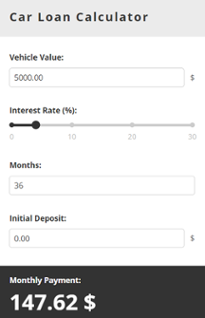
With all of these options, prospects should provide their email address to get their results. Upon completion, a lead can receive a discount on a product or service or an entry into a drawing.
A significant advantage of implementing these lead capture tools is that they allow a business to collect much information about the person taking the quiz that they don’t usually give a company. You can now ask them questions about personal preferences, points of view, or more in-depth information about their company to help your business get a better understanding of their wants and needs as well as how to best communicate with them.
Depending on the services your business offers, integrating an appointment scheduling tool onto your website is a surefire way to generate leads and engage directly with customers when they have an immediate need.
By providing an option for site visitors to contact your sales team and learn more about you, your business engages one-on-one with prospective customers.
To be precise, appointment scheduling is not an appointment setting. An appointment setting is a service a company pays to cold call other businesses and try to schedule some time with them to meet with your company. This can be a great system if it is implemented within your whole marketing plan, but if your marketing and sales process is not prepared for this, it can create significant friction with the prospect.
Demo requests and free trial periods have proven to be effective methods for software companies to acquire more significant qualified leads. Fortunately, both can easily be integrated into a lead capture page and corresponding lead capture form. Both are very similar to appointment scheduling in that the prospect reaches out to a business when they're actively seeking software to solve a problem they are experiencing. They also beat out other opt-ins such as case studies and eBooks because they offer a preview of the software in question.
When fulfilling a demo request or providing a free trial period, your business must understand the common pain points your target audience is likely to have. With this knowledge, you can create an offer that demonstrates how your product can effectively address their issues. Therefore, any prospect who inquires about your offer is likely to be a qualified one; translation: they are highly susceptible to convert into a paying customer.
Besides, demo requests and free trial periods offer prospects an excellent opportunity to determine if your software is a good fit for them. In the long run, this can translate into excellent customer reviews and customer loyalty. However, a word of caution: if the software you offer is exceptionally robust or has many features, a free trial might cause more harm then good. In situations like this, a product demo is a much better option.
All lead generation efforts have one goal in common: to get prospects onto a company website for a business to be in a position to help them identify, understand, or solve a problem.
If you run a business, once a prospect lands on your website, they can read your published content, discover the products and services you offer, and learn more about your company brand.
With multiple options to choose from diversifying how you capture lead information on your site, you can mix and match these options to fit your lead capture strategy best.
Be mindful of how many times you ask your visitors for their information. If your CTA's that aim to convince site visitors to provide you with their information doesn't fit the situation or are too intrusive, they could have the opposite desired effect. Just as important is to include a privacy policy and inform prospects that by providing their information, they give consent to receive further communication from you – this will elicit trust in an audience unfamiliar with your brand.
Once a visitor submits their information using a lead capture form, they gain access to your gated content, and your business can send them updates in your email newsletter, promotional emails, or contact them directly on behalf of the company.
A fully developed lead capture strategy can add much value to your sales and marketing efforts. Lead capture is an art – it allows your business to ask prospects to give you their information at the right moment where they see the most value of learning more from you and about you.
If your CTA's that aim to convince site visitors to provide you with their information doesn't fit the situation or are too intrusive, they could have the opposite desired effect.

At its core, a lead capture page is a type of landing page.
A landing page is a single web page meant for a specific marketing or advertising campaign. It's the page you're taken to after clicking on a link in an email, an ad, or a SERP (search engine results page).
A lead capture page, like any type of landing page, focuses on a single goal: the call to action (CTA). A compelling CTA will incentivize a prospect to provide specific information in exchange for gated content. When designing a lead capture campaign, it's essential to consider where a lead capture page is placed and the type of gated content. Keep in mind: a lead capture page only provides additional, in-depth information on a topic after a prospect gives you particular snippets of their data.
In addition to determining the best location(s)for your lead capture page(s) and the type of content to offer in each, knowing how many lead capture pages to have on your website is essential for a better lead conversion rate.
Factors such as where on a landing page, the type of content, and how many of a lead capture campaign should align so that a prospect is inclined to complete a lead form.
Within a lead capture page is the lead capture form.
A lead capture form is characterized by having at least one field where a prospect can enter their email address. An email address is the most critical piece of information you need from a website visitor because it gives you a non-intrusive way to contact them at a later time.
The more information that you request on a form also typically means the more qualified the lead, so it is significant to match the lead capture form to the intent of the offer. For example, if you are trying to get more prospects to sign up for an audit of their current process, you would want to collect the following information:
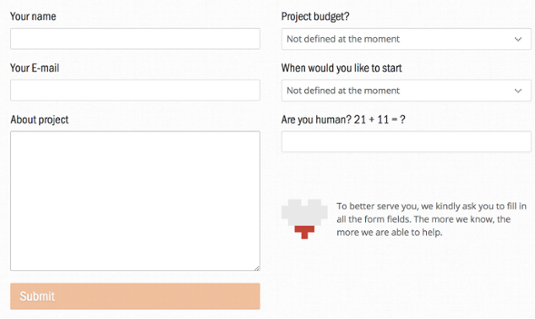
If the prospect provides all of this information, you know they are interested in talking with your business, and your solution and time are valuable to them. If your lead form exclusively asks for first name and email address, your marketing team may not be able to assess if this new lead is interested in learning more about your brand, or they only want to download your opt-in offer.
Now, if you asked for all of the information above for an e-book, the person downloading the book is going to be expecting some essential information to help them solve their problem and should be in the decision phase of the client buying process.
Do you need to know which city they are based in? Ask for their city or zip code. Is cold calling part of your sales strategy? Ask for a contact phone number. Do you want to know how your product or service can help them? Ask them to explain a significant pain point.
As a company, your marketing and sales strategy will depend on your particular needs. You can ask for pretty much any information from prospects that you deem necessary. However, keep in mind that the more fields on a contact form need to be filled out, the lower the chances a prospect will complete the form. As a point of reference, using a large pool of marketers, HubSpot determined that in 2019 the average length of a lead capture form was five fields.
Besides, the higher quality of content your opt-in offers, the more information you can ask from prospects. If this is the case for you, highlight the benefits your gated content will provide to those who complete your form.
Depending on where in the buyer's journey, your prospect is currently in will determine what information you can ask from them.
If they are in the awareness stage, you can typically ask for:
If they are in the consideration stage, you can usually ask for:
If they are in the decision stage, you can typically ask for:
Not all lead capture campaigns are created equal, and they don’t perform the same either.
When designing a lead capture strategy, it’s important to optimize a lead capture form with your end consumer in mind.
While your aim should be to gain new leads (an exact number will depend on your lead conversion goals), it’s more important to convert high-quality leads. A quality lead is one who is likely to become paying customers as they continue on the customer journey. Therefore, your forms should be crafted to weed out unqualified leads.
A starting point from which to optimize your lead capture forms is to consider how to integrate the various features that structure it. Elements such as the form’s position within the lead capture page, headline, form structure, number of fields on the form, and the type of information requested can all influence whether your lead capture form proves successful or not.
Additional aspects that heavily influence how profitable your lead capture forms include: the call to action (CTA), the type of gated content being offered, and any visuals and color combinations used to make it visually appealing. When these factors are implemented strategically, your lead conversion and bounce rate results should closely mirror your goals.
To learn how to optimize these elements, read here.
Striking the perfect balance between the various components that make up a lead capture form takes time and is based on trial and error. Let’s look at two methods you can use to find the perfect lead form that will deliver higher qualified leads.
A/B testing consists of using two versions of the same page on your website, each during a specific amount of time, and comparing how your site visitors interact with them. Most split tests run for at least a week to actively determine various factors.
These factors include: the average time a visitor stays on a lead capture page, the number of visitors who complete the lead form, and the average number of form fields prospects fill out before abandoning the form. Form abandonment is a factor you need to address when optimizing your landing pages.
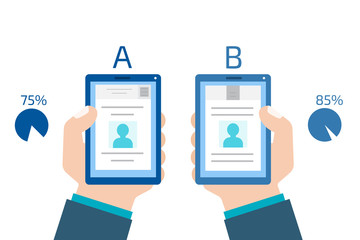
During every test you run, do keep in mind that you’re ultimately managing your lead capture campaign to attract high-quality leads who are likely to become paying customers.
Depending on the results of your split tests, you may need to tweak the headline, the copy, the number of fields, the information requested, or the CTA.
If done correctly, A/B testing your lead capture pages can result in more clicks, better conversions, a reduced bounce rate, and more quality leads.
Form analytics software promises one thing: to help you track and analyze how your site visitors interact with the web forms on your website.
It allows you to compare how many people see your form vs. how many people fill it out and where within the structure they get stuck.
With this kind of knowledge, you can pinpoint the problem areas within your lead capture form and increase the number of prospects who complete it and become leads.
Alongside this, form analytics software can help you reduce form abandonment (to reduce the number of people who start filling out your form but don’t finish it), grow your email list to nurture your newfound leads, and identify opportunities for improvement.
If you’re new to form analytics, these resources are sure to provide you with valuable insight.
There are additional things you should understand about lead capture to make the most of this powerful method for generating leads on your website.
These are: lead capture is a give & take transaction, pre-filled forms are magical, and your website and landing page(s) should have different purposes.
When speaking of lead capture, it’s impossible to get without giving. Unless you’re a very well-known brand, a website visitor who casually lands on your website won’t hand over their info unless they see some value in what you offer.
Looking at this from a different perspective: Company XYZ will sell you a solid piece of content or advice that will help you solve a problem after you, a website visitor, provide them with a way to contact you in the future. This way, Company XYZ can demonstrate how their products or services are such a good catch that they’re the answer to your problems.
For example, if your business sells heating and cooling systems for other companies, you can opt to offer a case study of previous customers. They have significantly reduced their costs by installing your products and using your maintenance service.
In exchange for the case study (a helpful piece of information), you can ask prospects to provide their zip code and business phone number alongside their business name and business email address. With this information, you can determine where your prospects are located, and a sales representative can contact them via telephone if they are a qualified lead.
When the quality of the exclusive content you offer promises to live up to their expectations, it’s more likely they will be open to providing more information to you.
Some lead capture forms may ask for much information to evaluate if a prospect is a quality lead. To avoid overwhelming them with having to input their info manually, you can use a pre-filled form. They work very well for forms with five or more fields.
Pre-filled forms will remember any relevant information a prospect has previously filled out in other forms. While this feature only works when a site visitor has already interacted with your brand, it can reduce the time it takes for them to fill out a form. Thus, increasing the likelihood of them completing the form and converting into a lead.
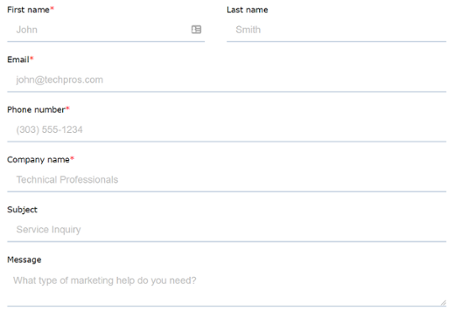
At first glance, a website homepage and a landing page may appear to be the same. While both are a type of web page, they hold distinct purposes.
A homepage is like the front cover of a website. It functions as the digital presence of a person, company, or idea. It’s there to create curiosity and inspire a visitor to explore other pages and satisfy their informational needs.
On the other hand, a landing page is a web page within a website. It’s the page that satisfies a visitor’s informational needs. There are two types of landing pages most businesses use click-through and lead generation.
A lead generation landing page is a lead capture page. You can learn more about it here.
A click-through landing page, also known as a squeeze page, is used in all types of online business, including e-Commerce. It aims to get one piece of information from a site visitor: an email address.
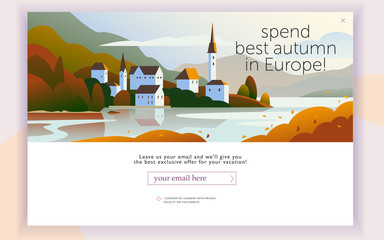
To make the most out of your lead capture campaigns, learn more about lead conversion rates.
As a business, your ultimate objective should be to increase your number of paying customers. To achieve this, it’s imperative your sales and marketing teams develop a lead generation and lead capture strategy that is sure to convert high quality leads.
If you’re already investing a hefty amount in a lead generation strategy that fits your sales goals, remember it’s just as important to focus on how you convert leads on your website.
With the right lead capture strategy in place, you can convert a higher number of your website visitors into leads.